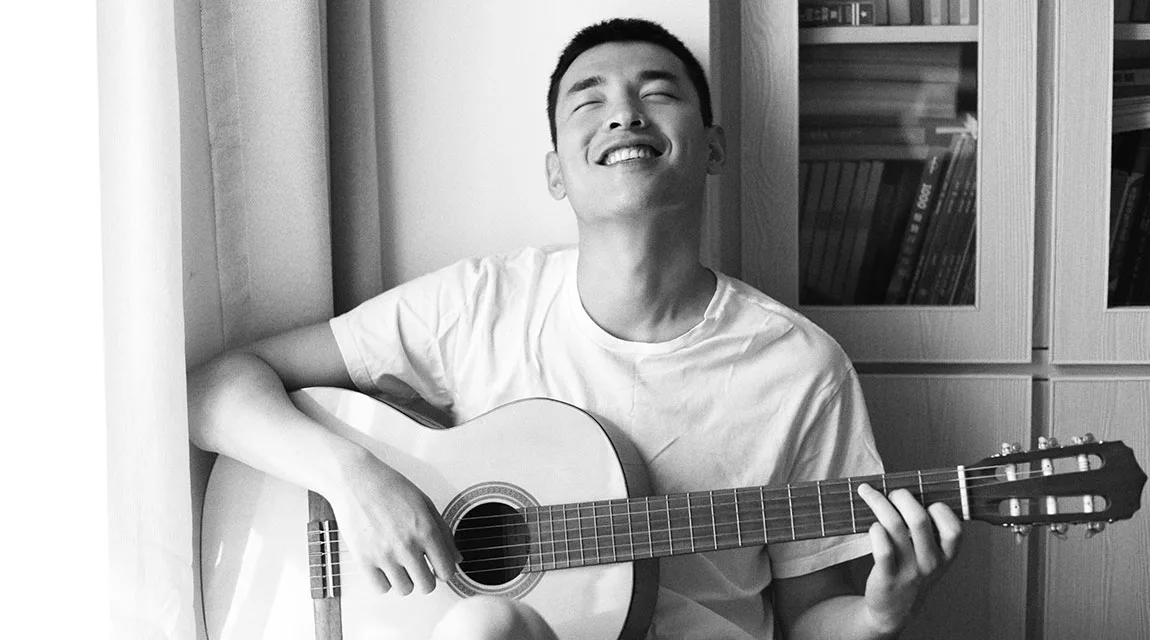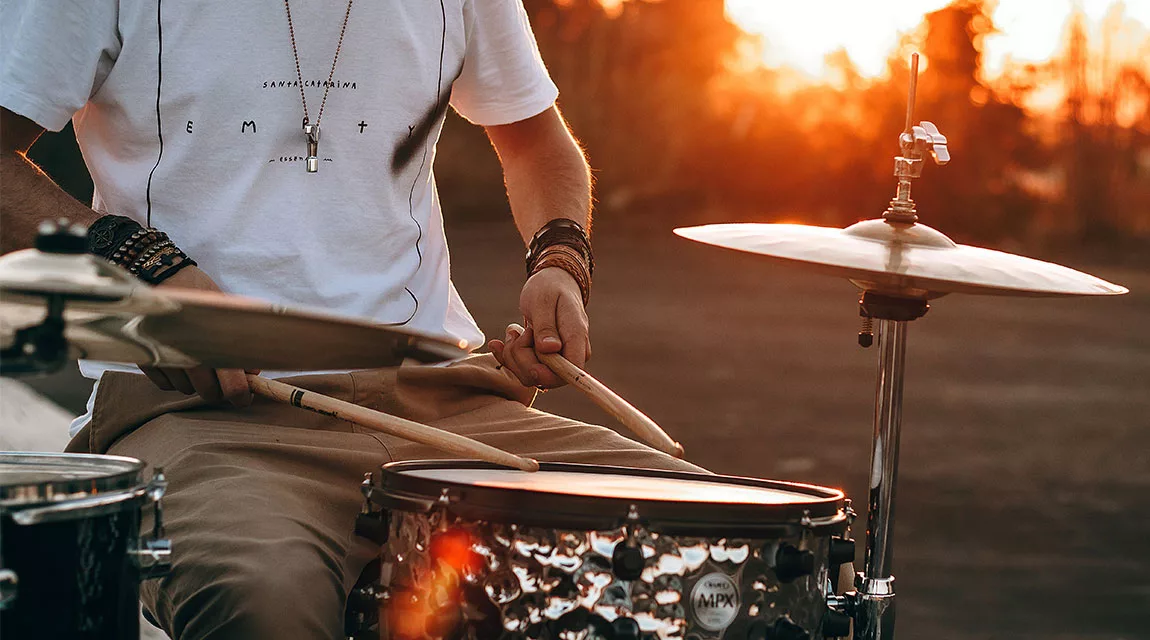Music has a way of opening our hearts and helping us feel more connected to others, to ourselves, and to the world around us. As a result, it is a direct line to our emotions and state of being. Consequently, it has been used as a therapeutic intervention since the late 18th century. Dr. Benjamin Rush, a physician and psychiatrist, was an early proponent of and the benefits of music therapy for medical conditions. By the early 20th century, physicians, musicians, and psychiatrists were using it as a treatment aid in a variety of settings.
Today, music therapy is a scientifically validated intervention. Moreover, it is used for multiple physical and mental health conditions, from Alzheimer’s and autism to depression and substance abuse.
“Music has a power over the body, a language that possesses an inherent nature to make us feel.”
—Deborah Bradway, MT-BC, from “Music Therapy as a Treatment for Substance Abuse with At-Risk Children and Adolescents”
What Is Music Therapy?
Music therapy, also known as sound therapy, employs music as a therapeutic modality. The goal is the use of musical interventions to accomplish goals within a therapeutic relationship.
Music therapy sessions typically include making and listening to music, followed by discussion. After an assessment, music therapy treatment can include creating, singing, moving to, and/or listening to music. Moreover, music therapy is based on psychological disciplines like psychodynamic, behavioral, and humanistic therapeutic approaches.
Furthermore, music therapy opens up avenues for communication that transcend the limitations of verbal expression. Consequently, this form of therapy can be particularly impactful for teens. Additionally, it has been used to foster emotional balance, while also providing insight into feelings below the surface that need to be expressed.
There are two different forms of music therapy, active and receptive.
Active music therapy—the therapist and the client(s) create music with instruments, their voices, or other objects.
Receptive music therapy—the therapist plays or makes music as the client listens.

Benefits of Music Therapy
When it is used to support mental health, it provides opportunities to
- Explore feelings around issues such as self-esteem or personal insight
- Make positive changes in mood and emotional states
- Enhance your sense of control over life by having successful experiences
- Increase awareness of self and environment
- Express oneself both verbally and non-verbally
- Develop coping and relaxation skills
- Support healthy feelings and thoughts
- Improve reality-testing and problem-solving skills
- Interact socially with others
- Develop independence and decision-making skills
- Improve concentration and attention span
- Adopt positive forms of behavior
- Resolve conflicts, leading to stronger family and peer relationships.
Therefore, the outcomes of music therapy include the following:
- Reduced muscle tension
- Improved self-image
- Better self-esteem
- Decreased anxiety/agitation
- More skillful verbalization
- Enhanced interpersonal relationships
- Stronger group cohesiveness
- Increased motivation
- Successful and safe emotional release.
—Source: American Music Therapy Association

A Calling to Heal with Music
Before he knew there was such a thing as music therapy, Tim Ringgold thought he had to choose between being a doctor and being a musician.
“I thought I was standing at a fork in the road, not an intersection,” says Tim, who is a board-certified music therapist at Newport Academy. “When I discovered the field of music therapy, it was life-changing. I could see the difference it makes on a daily basis.”
Since 1995, Tim has been using music to inspire interpersonal connection and creative, non-verbal expression. Furthermore, he uses it as a therapeutic modality to decrease anxiety and stress.
Tim regularly teaches and presents on music therapy across the country. In addition, he frequently speaks at national conferences, colleges and universities, and health-care organizations.
Plus, Tim has offered group music therapy sessions in numerous clinical settings and for diverse populations. Specifically, he has taken the benefits of music therapy to autistic children, cancer survivors, children and adults with developmental disabilities, people with Alzheimer’s, and hospice patients.
Currently, Tim offers music therapy primarily to adolescents and adults recovering from substance abuse, at Newport Academy, and in other settings.
“Our job is to give our kids healthy coping tools. If we can teach them how to use music as self-care, that’s a tool they will have forever.”
—Tim Ringgold, Music Therapist at Newport Academy
Evidence for the Benefits of Music Therapy
Many recent studies have shown the positive effect of music therapy on substance abuse disorder and mental health issues. In a 2004 review analyzing 11 studies, researchers concluded that this modality has a significant effect on clinical outcomes.
Moreover, music not only releases negative emotions, it also creates positive emotions. In a study of adults being treated for substance use disorder, participants reported that music therapy allowed them to experience emotions without the need for substance use.
Furthermore, research done with depressed adolescents showed that sound therapy shifted their brain activity and levels of cortisol (the “stress hormone”). As a result, researchers concluded that music had positive effects on their physiological and biochemical measures.
Moreover, another study looked at the benefits of music therapy for preadolescents with emotional, learning, and behavioral disorders. Subsequently, the results suggested that music therapy facilitated their process of self-expression. Additionally, it helped them channel frustration, anger, and aggression into creativity and self-mastery.
Drumming as Therapy
In addition, studies have been done specifically on drumming as a complementary therapy for substance use disorder. For example, one study found that drumming has the following positive results:
- Enhances recovery through inducing relaxation
- Produces pleasurable experiences
- Helps release emotional trauma
- Supports reintegration of self
- Alleviates self-centeredness, isolation, and alienation
- Creates a sense of connectedness with self and others
- Provides a secular approach to accessing a higher power and applying spiritual perspectives.
Let’s look at some of the reasons why music therapy has these powerful effects.

Music Enhances Mindfulness
Early in recovery, thinking about the future and all its unknowns can create fear and anxiety. Moreover, thinking about the past can bring up shame, guilt, anger, or resentment. However, music helps teens stay right here, right now.
“There are only three places you can be in your mind—past, present, or future,” Tim says. “Your attention determines your experience.”
As a result, when teens play and listen to music, their attention is focused on what they’re experiencing in the moment. Thus, their levels of well-being go up, because mindfulness is scientifically proven to enhance mental health.
“With music, you have to be in the present in order to keep up with the volume, the rhythm, and the timing,” Tim says. Therefore, you don’t need an instrument. In fact, dancing, singing, and clapping all offer the benefits of music therapy.
How Music Fosters Connection
Whether you’re listening to it or making it, “music connects us to someone outside of us,” Tim says. In other words, it’s like a mutual friend, he says. Therefore, it becomes something that we share with almost everyone.
Moreover, music is a collaborative and cooperative activity. Consequently, playing music with others automatically creates connection, as the group works together to keep the beat and stay in harmony.
In addition, when we listen to heartfelt lyrics and emotional melodies, we’re reminded of our shared human experience. “Contrary to what people think, sad music doesn’t make you sad,” Tim says. “It shows you that you’re not alone.”

Emotional Expression Through Music
For adolescents, using the body to work through emotions is often more effective than using the mind.
As Tim explains, “Sometimes we need a tool for expression that doesn’t involve words.”
“Kids need tools for releasing energy and emotions, and permission to do so. When you hit a drum, you can use it to release anger.”
Furthermore, the experience of making or listening to music offers a healthy emotional reward. Specifically, music stimulates the brain to produce dopamine, Tim explains.
As a result, it is a natural alternative to the high produced by drugs. “A brain starved of substances needs to learn healthy ways to feel joy and pleasure,” Tim says.
The Power of Music to Relax the Nervous System
Scientists have found that rhythm has a significant impact on the nervous system. Specifically, simply listening to music has a measurable positive effect on the psychobiological stress system.
“Every cell in our body operates under the organizing principle of rhythm, and they’re all functioning in concert,” Tim says. “Our heartbeat, sleep cycle, and breathing are all controlled by rhythm—we are walking rhythm machines.”
Because our bodies automatically respond to external rhythm, we can up-regulate or down-regulate the nervous system, Tim says. “We don’t have to be dependent on external devices or substances for relaxation or to increase our energy. We can use music to do the same thing far more efficiently, without side effects.”
Flexing Creativity Muscles
Making music and writing lyrics gives teens a chance to flex their creativity muscles, Tim says. “We can create new ways to relate to the past and present, new behaviors for coping with trauma, and new ways to be in relationships,” he says. “Creativity isn’t about talent—it’s about seeing life as an artistic medium.”
Moreover, creativity is proven to foster mental health. A recent study published in the Journal of Positive Psychology followed 650 young adults. Subsequently, they discovered that the study participants experienced greater flourishing and positivity on the days following increased creativity.
In conclusion, Tim is 15 years into his own recovery journey, and he credits music for helping him create a new life.
“Now I’m sharing these tools that took me out of my darkest place,” he says. “There’s no better use of my skills, and I can’t imagine anything more rewarding.”If you or someone you love is in need of support, contact us. Our team is here to help. Learn more about Newport Academy’s treatment approach.
Images courtesy of unsplash
Sources:
South Med J. 2005 Mar;98(3):282-8.
Am J Public Health. 2003 April;93(4):647–651.
J Child Psych and Psychiatry. 2004 Sept;45(6):1054–1063.
Arts in Psychotherapy. 2007;34(4):321–330.
PLoS One. 2013; 8(8): e70156.
Adolescence, 33(129), 109-116.






